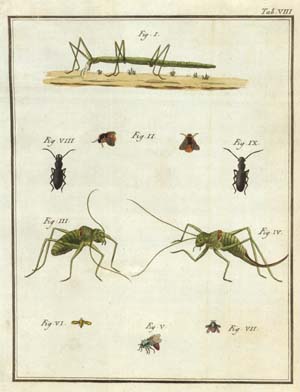|
Eristalinus Megacephalus
''Eristalinus megacephalus'' is a species of hoverfly. Description ''Eristalinus megacephalus'' has a black abdomen and golden horizontal stripes larger in males. It has a black thorax, legs with black tips, transparent, flexible wings, a large head and golden compound eyes with pale purple spots. Being about 8–11 mm long, it is a good pollinator, and uses Batesian mimicry to look like hymenopteran bees and scare away predators. Its appearance is also similar to bee flies (family Bombyliidae). The species is listed in 2: 63 of Rossi's publication ''Mantissa insectorum''. There are no subspecies. It is the rarest species of the genus ''Eristalinus'', and is common but not abundant. The species's flight period is from May to October, and is most plentiful from June to July. Distribution ''E. megacephalus'' can be found in most countries, including South Africa, Egypt, Sri Lanka, China, Taiwan, India, Java, Guam, Southern Spain, Turkey, North Africa, Iran, and coastal pa ... [...More Info...] [...Related Items...] OR: [Wikipedia] [Google] [Baidu] |
Pietro Rossi (scientist)
Pietro Rossi (23 January 1738 in Florence – 21 December 1804 in Pisa) was an Italian scientist and entomologist. Career Rossi's academic career was conducted at the University of Pisa, where he attained a doctorate in philosophy and medicine in 1759. He was then made a professor of logic in 1763, a position he held until 1801, when he finally received the chair for natural history with the special field "insectology", making him the world's first professor of entomology. His publications, particularly ''Fauna etrusca'' (1790) and ''Mantissa insectorum'' (1792), are considered pioneer achievements of entomology and still possess scientific validity in the fields of taxonomy and biological nomenclature. Parts of his collection were once in the possession of Johann Christian Ludwig Hellwig in Braunschweig; these are now in the Natural History Museum of Berlin. In 1793, he was elected a foreign member of the Royal Swedish Academy of Sciences. After his death, the ''Museo entomo ... [...More Info...] [...Related Items...] OR: [Wikipedia] [Google] [Baidu] |
Egypt
Egypt ( ar, مصر , ), officially the Arab Republic of Egypt, is a transcontinental country spanning the northeast corner of Africa and southwest corner of Asia via a land bridge formed by the Sinai Peninsula. It is bordered by the Mediterranean Sea to the north, the Gaza Strip of Palestine and Israel to the northeast, the Red Sea to the east, Sudan to the south, and Libya to the west. The Gulf of Aqaba in the northeast separates Egypt from Jordan and Saudi Arabia. Cairo is the capital and largest city of Egypt, while Alexandria, the second-largest city, is an important industrial and tourist hub at the Mediterranean coast. At approximately 100 million inhabitants, Egypt is the 14th-most populated country in the world. Egypt has one of the longest histories of any country, tracing its heritage along the Nile Delta back to the 6th–4th millennia BCE. Considered a cradle of civilisation, Ancient Egypt saw some of the earliest developments of writing, agriculture, ur ... [...More Info...] [...Related Items...] OR: [Wikipedia] [Google] [Baidu] |
Eristalinus Taeniops
''Eristalinus taeniops'' is a species of hoverfly, also known as the band-eyed drone fly. Distribution This species is present in part of Europe (Albania, Balearic Islands, Bulgaria, the Canary Islands The Canary Islands (; es, Canarias, ), also known informally as the Canaries, are a Spanish autonomous community and archipelago in the Atlantic Ocean, in Macaronesia. At their closest point to the African mainland, they are west of Morocc ..., Cyprus, France, Greece, Italy, Malta, North Macedonia, Poland, Portugal, Spain), in North Africa, in the Near East (Turkey, Lebanon, Israel, Syria), in the Caucasus, in the Eastern parts of Afrotropical realm to South Africa, in the Indomalayan realm, Oriental realm (Nepal, Northern India), in Northern Pakistan and in Iran. It has been introduced to parts of North America (California and Florida). Recently this species has been discovered in Rio de Janeiro, Poços de Caldas, Curitiba, Brazil, and Nova Maringá, Brazil. Habitat The ... [...More Info...] [...Related Items...] OR: [Wikipedia] [Google] [Baidu] |
